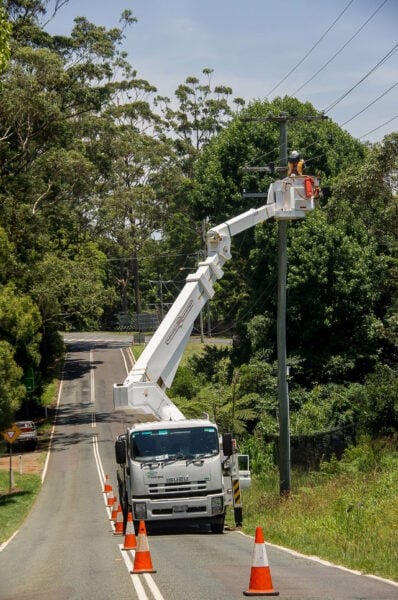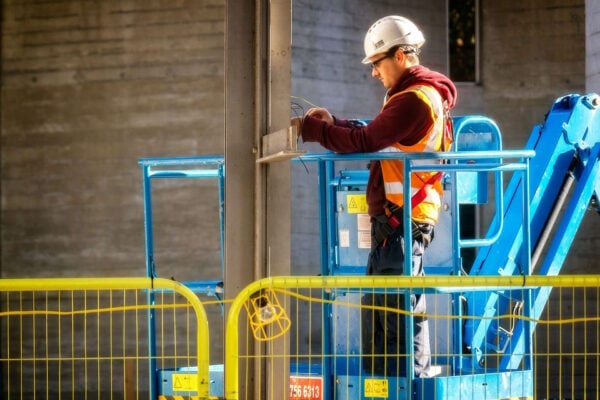Accidents between EWPs and pedestrians can be serious. Because EWP operation is high-risk, EWP training is required every 3 years. EWPs move slowly and generally have good visibility for the operator, so accidents involving them and pedestrians due to driving are far less frequent than accidents involving pedestrians and forklifts. However, they do happen.
The main causes are:
- The EWP falls over and onto a person
- The EWP falls off what it is being loaded onto (e.g. a truck)
- The EWP rolls backwards or forwards when being loaded using a winch
- A heavy item falls off the EWP, for example, an impact driver
- A pedestrian’s foot is run over when standing too close to a scissor lift, or they are crushed against something due to the tail swing
- A pedestrian is hit by the rotating counterweight of a boom lift
The best solution is to separate any pedestrian activity from any work with the EWP by using cones and barriers, but this is not always possible.

Pedestrian visibility
- Other workers in the area must wear high-vis vests.
- Workers working under an EWP must wear a hard hat to help protect against falling objects; a brightly coloured one also helps with pedestrian visibility.
- A company should have a stated minimum level of PPE for workers.
- Pedestrians should stick to marked walkways and not cross cones or barriers into areas where EWPs are working.
- Operators should wear sunglasses in bright conditions.
Site policies
- The site hazard board should note EWPs as a major hazard for workers and visitors.
- Any induction for new team members or visitors should include what EWPs are being used and where/how they are being used, e.g. scissor lift to repair ventilation shafts in the warehouse.
- Inductions and/or training for workers working around scissor lifts should point out the main hazards (falling objects, rotating counterweight, etc)
Operator obligations and responsibilities
- It’s best practice for EWP operators to give way to pedestrians, to slow down when driving in an area with other vehicles and pedestrians, and to be aware of hazards on the intended route that could cause an issue with the EWP, e.g. potholes.
- An operator should signal to a pedestrian what to do, and wait until the pedestrian is out of the way until moving again.
- Operators and pedestrians might be wearing hearing protection; don’t assume that pedestrians have heard the operator or the EWPs motion buzzer, and don’t assume that operators have heard a shout-out from a pedestrian. Operators and pedestrians should not be listening to music via headphones.
- A spotter should be used to help with maneouvring, and to ensure that pedestrians are not in the way.
Health and safety in the workplace with EWPs
- Everyone on the job site is jointly responsible for safety, although people are ultimately responsible for their own actions.
- Managers should look for ways of separating EWPs from other workers. The minimum level is cones, while more permanent options are fixed pedestrian walkways with barriers.
- Boom lifts and scissor lifts should not be left in areas where pedestrians might walk into them, or where they might block doors and fire exits.

Warning methods
- EWPs have a buzzer or other noise that sounds when it is being moved.
- Operators should use eye contact, hand signals and shout-out to communicate with one another.
Approaching an EWP
- Make eye contact plus a hand signal or verbal command to the operator, waiting for acknowledgment.
- Approach the EWP, considering which way it could potentially tip if things go wrong, or wait for the operator to approach you.
- Do not stand directly underneath a working scissor lift or boom lift (any part of the boom).
- Respect any exclusion zones established; if you have to enter one, the boom lift or scissor lift must be lowered first and disabled (i.e e-stop pushed).
- Once the conversation is finished, step back out of the exclusion zone so that the operator can continue working.

